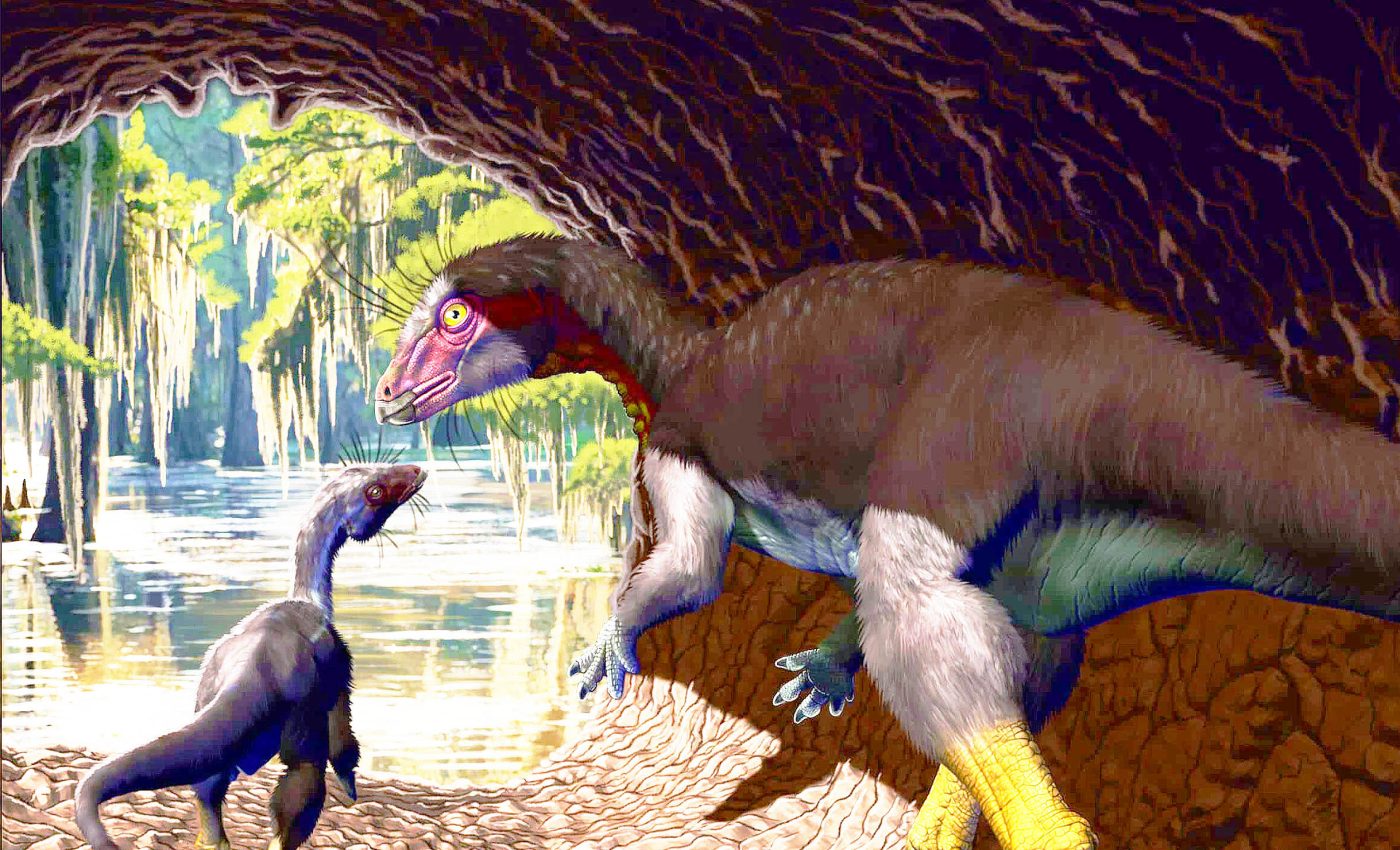
Some dinosaurs dug burrows and lived underground
If we thought we knew everything about the fascinating world of dinosaurs, here’s something to stir up our notions. The recent discovery of a species named Fona herzogae tells us that dinosaurs also led a life underground in burrows.
This new twist in the tale comes courtesy of a newly discovered burrowing relative of Thescelosaurus, providing a fresh perspective on life during the mid-Cretaceous period.
Fona herzogae, the burrowing dinosaur
Making its home 99 million years ago in what constitutes present-day Utah, Fona herzogae painted a picture very different from our traditional dinosaur imaginations.
Amid a large floodplain ecosystem with a backdrop of an inland ocean on one side, and volcanoes and mountains on the other, Fona was a plant-eating, small-bodied dinosaur that was quite distinct from its more decorated relatives.
Paleontologists from North Carolina State University and the North Carolina Museum of Natural Sciences came across this intriguing species in the infamous Cedar Mountain Formation.
Haviv Avrahami, a Ph.D. student at NC State and digital technician for the Dueling Dinosaurs program at the North Carolina Museum of Natural Sciences, is the first author of the paper describing the work.
“The bias in the fossil record is toward bigger animals, primarily because in floodplain environments like the Mussentuchit, small bones on the surface will often scatter, rot away, or become scavenged before burial and fossilization,” Avrahami notes.
Underground connection
The uniqueness of Fona lies in its several anatomical features that exemplify digging or burrowing qualities such as larger bicep muscles, strong muscle points on the hips and legs, fused bones along the pelvis – probably aiding in stability while digging — and hindlimbs that are notably larger than forelimbs.
Not just anatomical inference, the frequency of Fona fossils, according to Lindsay Zanno, associate research professor at NC State and head of paleontology at the North Carolina Museum of Natural Sciences, was alarmingly high for a little animal with fragile bones.
“Essentially, Fona did the hard work for us, by burying itself all over this area,” Zanno notes.
Influence of Fona herzogae
Fona herzogae not only sharpens our understanding of dinosaur lifestyles but also broadens our knowledge of Cretaceous ecosystems.
“Fona gives us insight into the third dimension an animal can occupy by moving underground,” Avrahami adds, emphasizing the importance of its discovery in understanding the diversity of small-bodied herbivores.
Zanno reiterates the importance of the discovery saying that we now understand that dinosaurs ranged from tiny arboreal gliders and nocturnal hunters to sloth-like grazers, and yes, even subterranean shelters.
As we unravel the mysteries encompassing the captivating world of dinosaurs, this new discovery roots us more deeply into the awe-inspiring aspects of evolution, making us ponder over the untold secrets that lay buried beneath the folds of time.
Evolutionary adaptations of Fona herzogae
The discovery of Fona herzogae challenges established notions about dinosaurian evolution, specifically their adaptability to various ecological niches.
Traditional perspectives often depict dinosaurs as either terrestrial, arboreal, or aquatic creatures.
The revelation of a burrowing dinosaur like Fona introduces a fourth dimension to this evolutionary paradigm, highlighting an impressive adaptability and versatility in ecological roles.
This underground niche occupation suggests that some dinosaurs developed complex behaviors and physical adaptations to escape predators, withstand harsh environmental conditions, or exploit subterranean food resources.
Paleontological methodology
The findings associated with Fona herzogae not only enrich our understanding of dinosaur biodiversity but also suggest revisions in paleontological methodologies.
The study underscores the importance of looking beyond the larger and more apparent fossils to discover smaller and potentially more elusive species.
Advanced imaging techniques, detailed sediment analysis, and targeted excavation strategies could unearth a wealth of information about smaller-sized dinosaurs that might have previously gone unnoticed.
As Avrahami and Zanno’s work illustrates, these approaches can uncover pivotal information about the diversity and complexity of extinct ecosystems.
Future research directions
Fona herzogae sets a precedent for future research focusing on lesser-known aspects of dinosaur life. Future studies could investigate other potential burrowing dinosaurs or similar adaptive behaviors among contemporaneous species.
Additionally, examining the environmental factors that facilitated the existence of burrowing dinosaurs during the Cretaceous period might provide further insights into their evolution.
Collaborative efforts between paleontologists across various disciplines, such as geology, biology, and computer science, will be essential in piecing together these intricate details of the past.
As new techniques and technologies emerge, our understanding of these ancient creatures will continue to deepen, revealing the full spectrum of life during the age of dinosaurs.
The study is published in the journal The Anatomical Record.
—–
Like what you read? Subscribe to our newsletter for engaging articles, exclusive content, and the latest updates.
Check us out on EarthSnap, a free app brought to you by Eric Ralls and Earth.com.
—–















